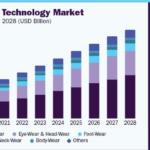The Future of Education in a Modern World
Education is slowly evolving as modern society becomes more technologically advanced. Many universities are now using technology to teach students online. For example, many universities offer entire courses online with professors teaching from their classrooms or office.
Many online textbooks can be used by students who cannot afford to purchase physical books. Students will continue to rely on education as they rely on technology and information becoming more accessible to access-therefore making it possible for them to become better educated.
Today, younger citizens do not see the value in higher education as it has become less important than other types of careers such as professions. Unemployment rates are rapidly rising, and younger people must prepare for a declining economy, meaning that there is now more pressure on students to entrench themselves into lucrative jobs.

How Education is Changing in the Age of Digitalization
Easy access to educational resources
Accessibility for students is a significant issue in today’s educational environment. The ability to find resources and use them effectively can be a significant factor in the success of any student, which is why schools must provide an easy way for students to search for resources.
This concept is also beneficial to instructors because they can spend less time managing their course’s slides or templates and more time teaching. Leading digital equipment manufacturers are working on making the classes easier for both students and teachers with several solutions.
Digitalization of existing information has allowed for the use of PDFs to display PowerPoint slides. This is very convenient but still doesn’t eliminate some hurdles students may face when using these materials in their home environment.
WebCT offers many digital services and tools designed to help instructors with K-12 education in an interactive online format.
Practical Learning Strategies
One of the most important aspects to ensure success in any class is making sure that students are well-prepared. Research has shown several benefits associated with practical learning strategies, including increased time on task and efficient study habits.
Practical activities also produce better memory recall than lectures, which means instructors have more opportunities to relate concepts related to independent work or group projects.
Instructors can help increase student engagement by avoiding similar solutions for various problems since seeing different approaches teaches valuable techniques for solving new issues as they arise.
Software from leading digital equipment manufacturers, such as Delorme and KeyLab, can allow students to record practice sessions. This practical recording often brings home the problems that need to be solved and makes them more present in the student’s minds when they try again later on.
Focus on Students Choice and Preferences
When it comes to buying a product, everyone has a personal preference. For example, if you ask ten people what they want on a phone for their lifestyle, the response may be different from person to person.
To satisfy these preferences and desires, marketers have created product lines that appeal to specific groups of people. Instead of just offering one type of phone model, companies create two or more types tailored towards different demographics.
In high school courses, instructors should urge students to engage in class discussions regarding what they want and need from their learning experience and ensure that the instructors and other departments in the college utilize these preferences to establish a more personalized classroom environment.
Sharing and Connecting With Others
In the age of digitalization, the way people communicate is changing. This change in communication includes different ways to connect and share information in a digital world.
From devices like tablets and smartphones to social media, there are many ways for people to engage with each other in today’s society. Instructors must be prepared to understand these different communication styles so students can come into the classroom with a very open mind and learn how they communicate.
Since this age of digitalization is new, instructors must take advantage of all possible modes of communication. Instructors should consider using project-based learning methods in class such as collaborative writing or online discussion boards rather than just delivering information through PowerPoint presentations in their typical lecture format.
Edutainment
Digitalization in the 21st century has changed how people consume information. This means that the way students learn is changing too. With the development of technology, students can receive information through various methods outside of their classroom setting.
This includes online sources, audiobooks, podcasts, videos, and more. Students are also able to use these resources to have conversations with one another about topics that they might not be comfortable speaking out loud in a school setting.
The major change in education is the shift from a fixed curriculum to an open-ended curriculum where teachers can choose the most beneficial content. Digitalization can allow anyone with an Internet connection to be a provider of information and learning. Hence, the changes in education can be attributed to the digitalization of society.
Skill-Based Education
Traditional Education study is like if you were to pass through a tunnel with walls on either side, your teacher who tells you what’s printed in books, listening carefully and repeating exactly what they’ve read.
The best moments in traditional education are marked by recitation, whether the question at hand is right or wrong, explanations for technical words that break down complicated charts made out of dots.
Is this really all there is to knowledge? Not so fast… With digitalization, many things change when entering into digitally-enabled learning scenarios.
The transition to “skill-based” education is one that involves live opportunities, digital collaborations, and multi-dimensional data creation. Multiculturalism blended with English Classes leads many students across the globe towards learning technology innovation programs alongside school subjects.
It does not always have to be this way, though, as some schools are making an effort to provide more diverse learning environments for young people who will actually use all of these technological options available in our current age.
Learning On the Go
The digital age has brought about big changes to how people learn. The increase in accessibility through online education and the technology that is available today has made learning easier for many people.
Despite these advances, access to educational content still varies between different individuals because of literacy levels and other factors. This means that getting information out of print materials can be difficult, if not impossible, for some learners.
Therefore, technology is becoming a more important part of the learning process. Technology has had a significant impact on how people learn. It allows learners to learn in different ways, changing the way schools are run. Some of these changes include:
The ability to access information through technology allows learners to get information from anywhere, at any time, and for free. It has become easier for students to find what they need when they need it.
Appreciating The Competencies of Students
Digitalization changes all of this for us as learners by making access to information and educational tools over the internet available. Digital convergence allows students younger and older with different abilities, backgrounds, interests, or not interested in learning anything new.
Appreciating students’ competencies in today’s world is not a new concept and has been growing to help children who may be less motivated or find it difficult to keep up.
The idea was brought back during this time because we live in an age where everyone uses technology for almost everything they do, from entertainment films throughout their day to writing ebooks quickly after watching television.
This makes sitting down at our computer (or book) very easy and entertaining, especially when followed by social media that allow us to move images instead of words like phone numbers Verizon tablets drawings so much easier
Innovation is a trend that leads us towards more adaptable ways of educating people from every kind of background. Current technology facilitates academic achievement through data creation among those familiar with these methods so they can be utilized across multiple platforms.
Internships
The digital era is transforming the way students experience internships. Before, most people would go to an internship where they learned about the company and got a chance to build their resumes.
Today, interns are more likely to do tasks for their company, such as developing marketing strategies or providing customer service. The change in these types of internships has resulted in higher demand for candidates with relevant skill sets that are not just found on paper.
While internships have changed drastically, students who take time to research and find a good internship still stand better chances of getting the job they want.
By searching for an online database such as Glassdoor can give you a sense of where companies are hiring these days given previous positions completed or desired skill sets.
Adaptive Learning Platforms
The digitalization of our society has led to many changes. As technology advances, adaptive learning platforms are changing in the same realm. The world is becoming more and more digitized, which means that learners need to be prepared for this change in order to succeed in their education.
Adaptive learning platforms help students adjust their learning based on what they know and what they don’t know. They also allow students to learn at their own pace by providing tools like personalized feedback loops and progress-tracking features.
Additionally, these systems help teachers build stronger relationships with students because they can easily communicate with them throughout the semester.
This change in adapting learning platforms is leading to better education opportunities for students due to making it easier for them to learn at their own pace and incorporate feedback into classroom teaching methods.
Conclusion
In the digital age, there is a need for educators to adapt their teaching methods to satisfy the needs of students. Educators are required to use technology in order to reach out and educate students who are not currently able to attend school.
As technology advances, educators will have more tools available to them. They will be able to reach out with ease before their students are unable or unwilling to leave their house or school. With this emerging change, education is looking towards the future with great anticipation.
Author Profile

-
Hi I am Karan a passionate blogger. It's almost 4.5 years when I started blog writing in 2019. I am the owner of the Dailylist.in. My dedication to delivering reliable information and useful tips has earned him a loyal following among tech enthusiasts seeking reliable insights and recommendations.
If You have any query then email Us. dailylist88@gmail.com



